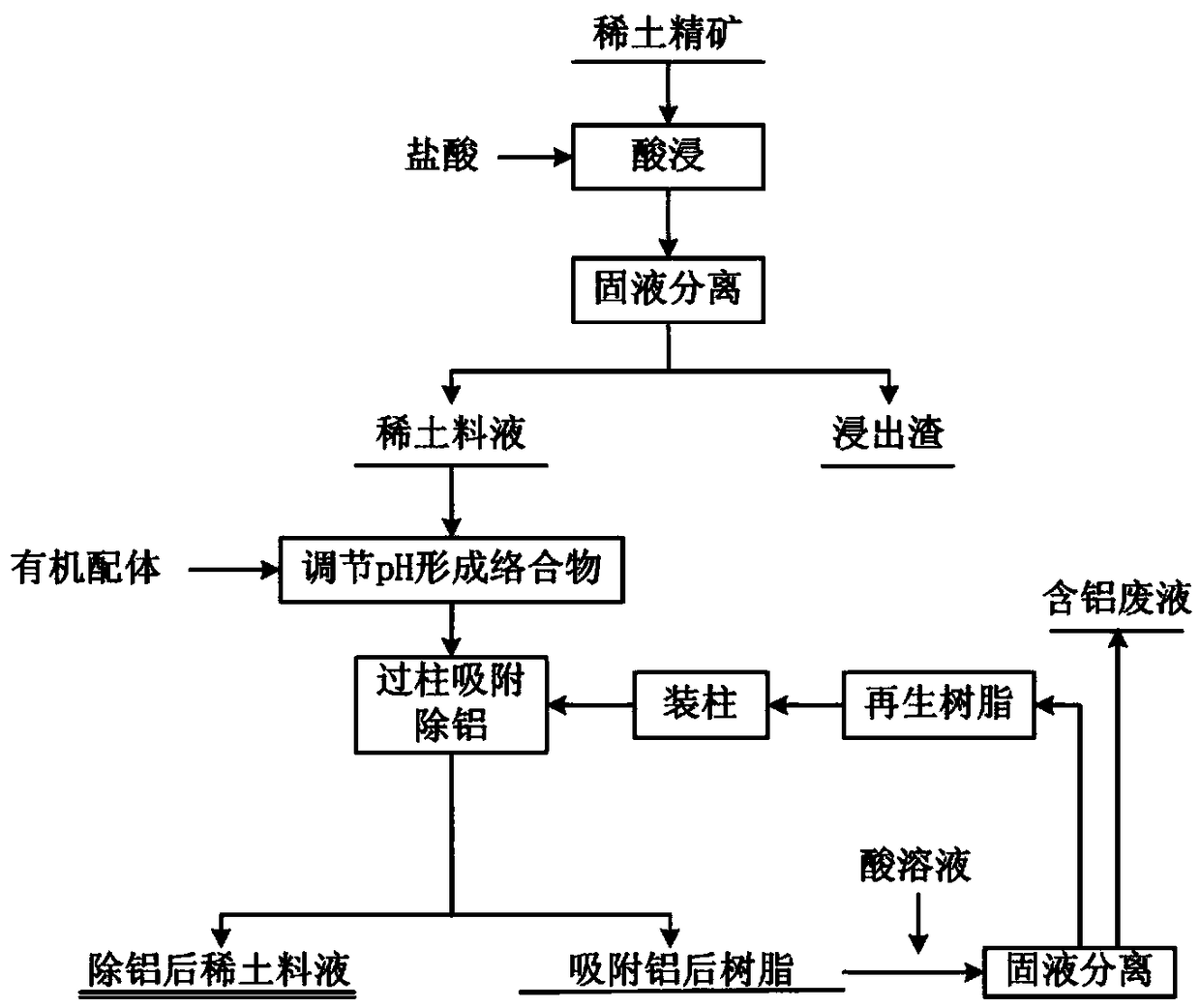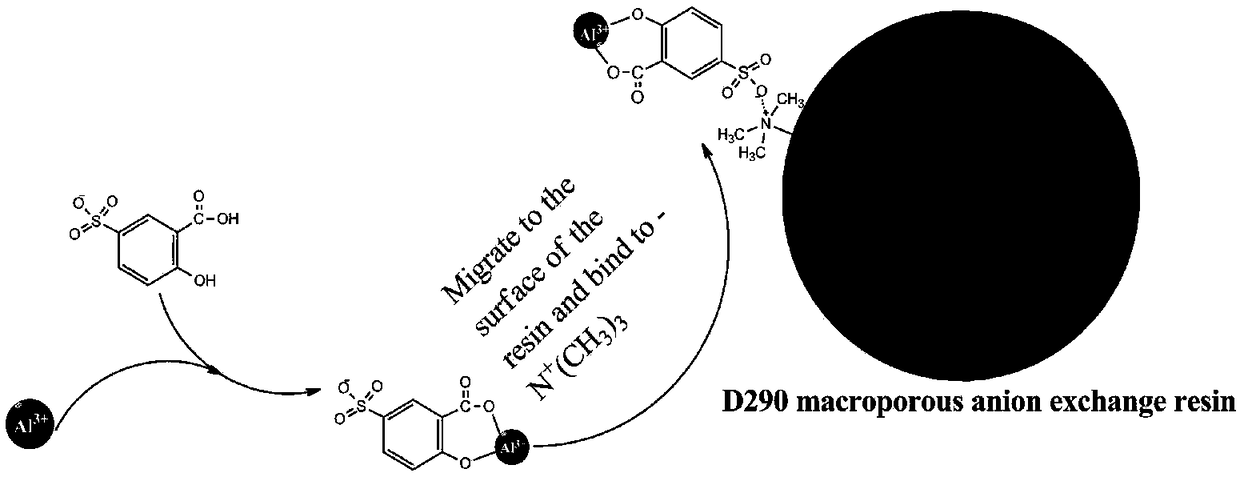Method for adsorbing and removing aluminum from rare earth material liquor through complexing-ion exchange synergistic effect
An ion exchange and synergistic technology, applied in the fields of chemistry, hydrometallurgy, and materials, it can solve the problems of difficulty in separating rare earth and aluminum, and achieve the effect of reducing concentration and production cost.
- Summary
- Abstract
- Description
- Claims
- Application Information
AI Technical Summary
Problems solved by technology
Method used
Image
Examples
Embodiment 1
[0041] (1) Rare earth concentrate hydrochloric acid leaching solution: aluminum content 0.944g / L (as Al 2 o 3 ), the rare earth content is 84 g / L (based on REO), and the pH of the solution is 1.5.
[0042] (2) Pipette 100mL of leaching solution into a 300mL Erlenmeyer flask and put it into a constant temperature water bath with magnetic stirring, weigh 0.7058 g of 5-sulfosalicylic acid into the Erlenmeyer flask, stir at 20°C and add 10% NaOH The solution slowly adjusts the pH of the rare earth solution to 4.5 and reacts for 5 minutes.
[0043] (3) 20g D290 type anion exchange resin was wet-packed, and then the leaching solution was passed through the D290 type anion exchange resin column at 1 mL / min, and the Al in the solution after adsorption was 3+ 0.11g / L, the removal rate of aluminum is 78.1%, and the loss of rare earth is 4.7%.
Embodiment 2
[0045] (1) Rare earth concentrate hydrochloric acid leaching solution: aluminum content 0.944g / L (as Al 2 o 3 ), the rare earth content is 84 g / L (based on REO), and the pH of the solution is 1.5.
[0046] (2) Pipette 100mL of leaching solution into a 300mL Erlenmeyer flask and put it into a constant temperature water bath with magnetic stirring, weigh 0.8068 g of 3-sulfosalicylic acid into the Erlenmeyer flask, stir at 30°C and add ammonia water to slowly adjust Rare earth solution pH = 4 reaction 10min.
[0047] (3) 20g D290 type anion exchange resin was wet-packed, and then the leachate was passed through the D290 type anion exchange resin column at 5 mL / min, and the Al in the solution after adsorption was 3+ 0.145g / L, the removal rate of aluminum is 77.3%, and the loss of rare earth is 3.0%.
Embodiment 3
[0049] (1) Rare earth concentrate hydrochloric acid leaching solution: aluminum content 0.178g / L (as Al 2 o 3 ), the rare earth content is 100 g / L (based on REO), and the pH of the solution is 2.0.
[0050] (2) Pipette 100mL of leaching solution into a 300mL Erlenmeyer flask and put it into a constant temperature water bath with magnetic stirring. Weigh 0.1565 g of 4-sulfosalicylic acid and add it to the Erlenmeyer flask. Adjust the pH of the rare earth solution to 4.5 and react for 30 minutes.
[0051] (3) 20g D290 type anion exchange resin was wet-packed, and then the rare earth feed solution was passed through the D290 type anion exchange resin column at 10 mL / min, and the Al in the solution after adsorption 3+ 0.041g / L, the removal rate of aluminum is 82.9%, and the loss of rare earth is 4.3%.
PUM
 Login to View More
Login to View More Abstract
Description
Claims
Application Information
 Login to View More
Login to View More - R&D
- Intellectual Property
- Life Sciences
- Materials
- Tech Scout
- Unparalleled Data Quality
- Higher Quality Content
- 60% Fewer Hallucinations
Browse by: Latest US Patents, China's latest patents, Technical Efficacy Thesaurus, Application Domain, Technology Topic, Popular Technical Reports.
© 2025 PatSnap. All rights reserved.Legal|Privacy policy|Modern Slavery Act Transparency Statement|Sitemap|About US| Contact US: help@patsnap.com


